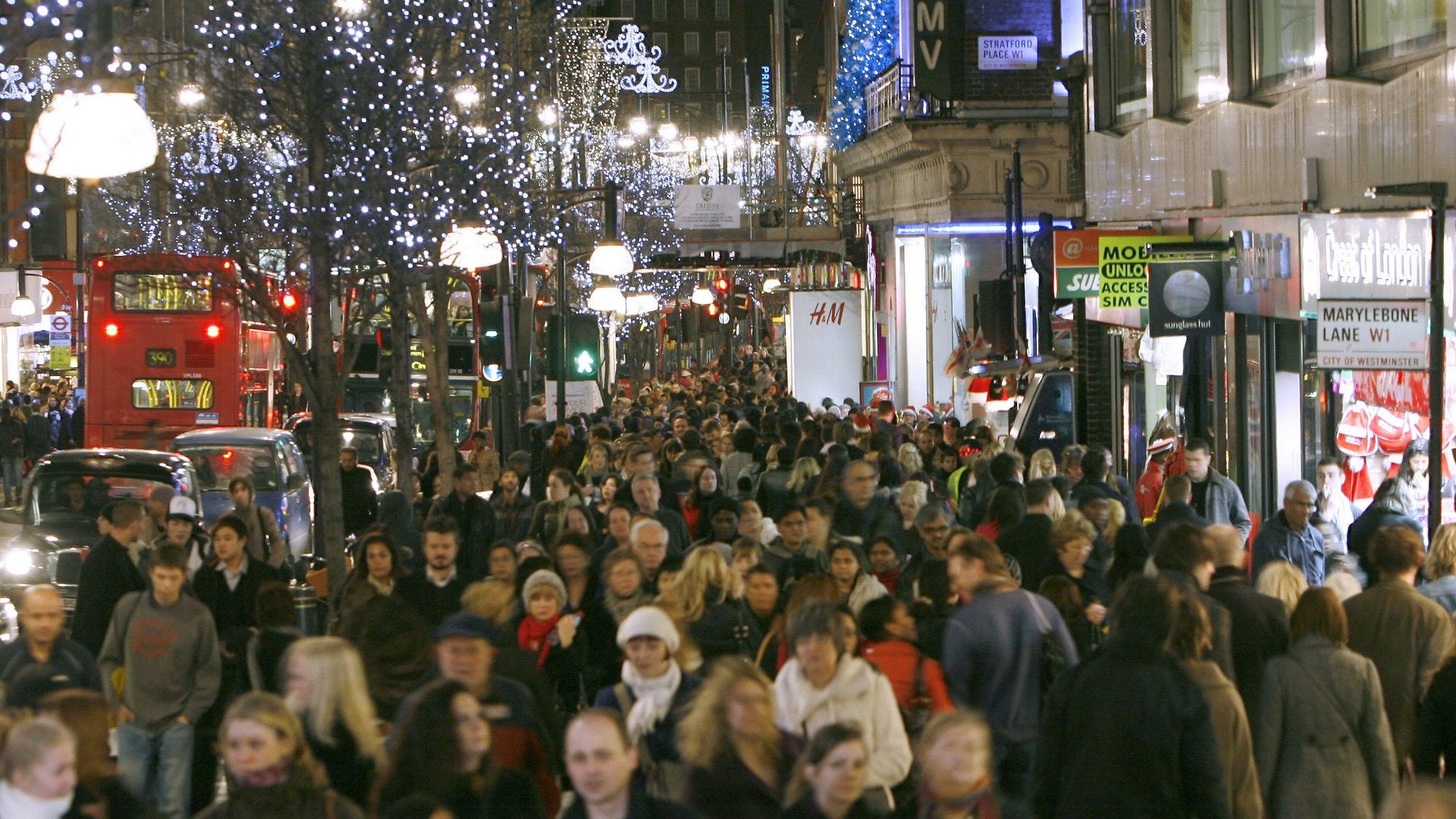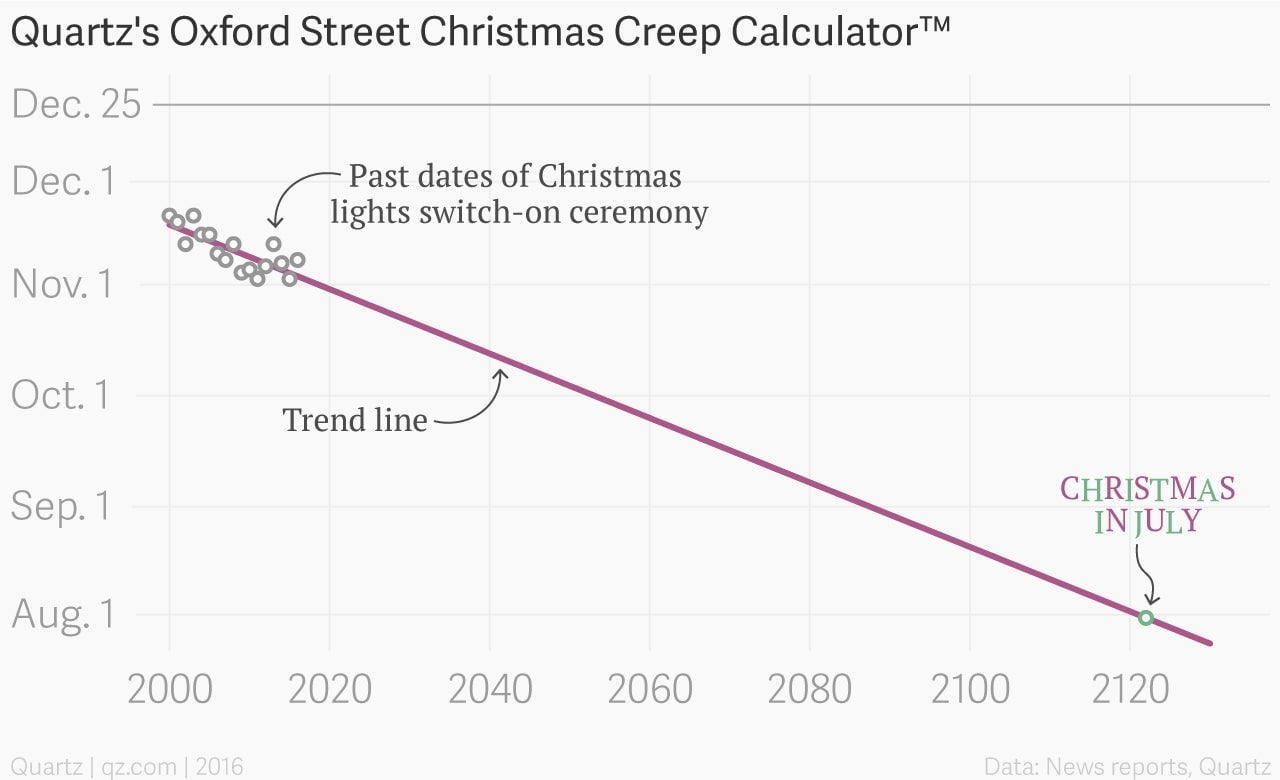How long before we see Santa in July? Consult Quartz’s Christmas Creep Calculator™
For retailers, the Christmas shopping season can never start early enough. Long before December, companies try to get shoppers in the mood with elaborate displays, enticing discounts, and other special events.


For retailers, the Christmas shopping season can never start early enough. Long before December, companies try to get shoppers in the mood with elaborate displays, enticing discounts, and other special events.
Britain is at the forefront of Christmas creep, free from interference with other holidays like Thanksgiving in the US or traditions that restrict Christmas-themed activities to the four weeks of Advent, common in continental Europe. In short, it’s a free for all.
Last year, the Christmas lights along Oxford Street, London’s most famous shopping avenue, were switched on Nov. 1, a bold flirtation with breaking the October barrier. This year, the lights get turned on a mere 49 days from Christmas, on Nov. 6.
Still, the trend is clear. Last year, Quartz unveiled its highly sophisticated Christmas Creep Calculator™, a finely tuned mathematical model that uses the dates of Oxford Street’s lighting ceremony to project the path of the Christmas shopping season creeping ever earlier in the calendar. Eventually, we forecast, crass commercialism will overcome seasonal sense, and we’ll see Christmas in July, the retailers’ ultimate dream.
Our model has been updated with the latest data:

According to the forecast, Oxford Street’s shoppers will encounter Christmas lights in October by 2020. A century later, their great-great-grandchildren will get into the spirit when the lights are switched on in July. That’s assuming, of course, that we won’t just consume everything as a service summoned via app at that point, negating the need for bricks-and-mortar stores in the first place.